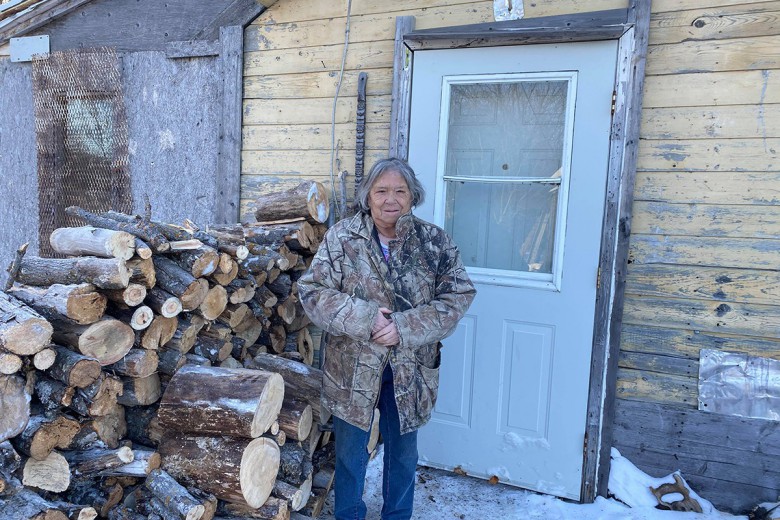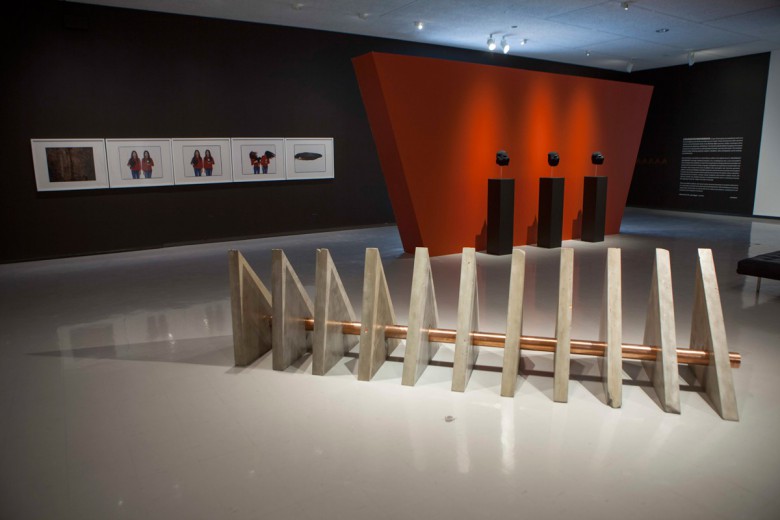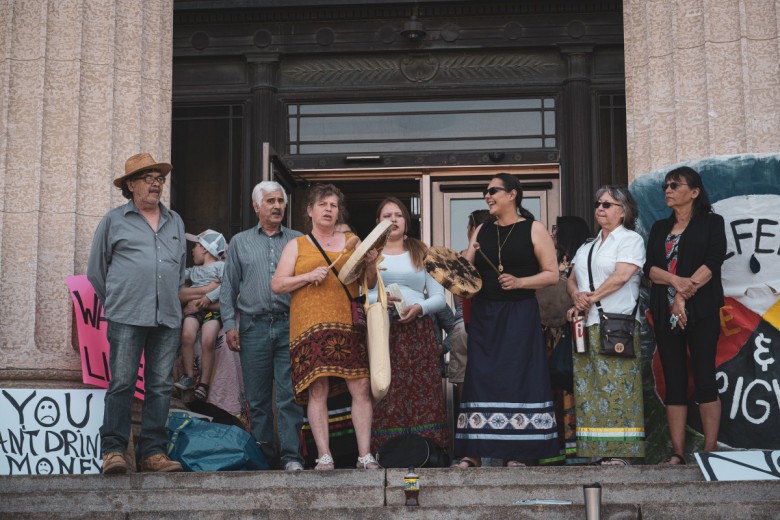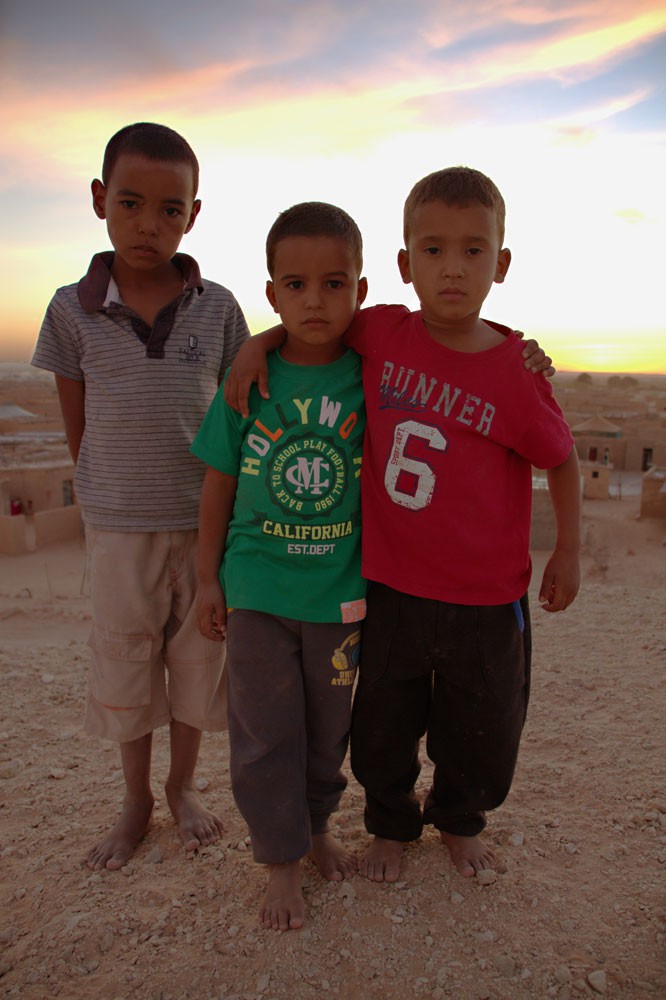
It’s Wednesday, November 6, 2013. I’m the chaperone for a group of my high-school students attending Free the Children’s second annual We Day held at the Credit Union Centre in Saskatoon. Though We Day is intended to be a giant social justice pep rally, attendees will find that Craig and Marc Kielburger’s multimillion-dollar Free the Children charity sets aside ample time to champion the good works of the event’s top sponsor, Potash Corporation of Saskatchewan (PCS). I watch with my students as Free the Children co-founder Marc Kielburger interviews (then) PCS top boss Bill Doyle on stage. Doyle proclaims his company’s goal to partner with Free the Children in their effort to increase global food security for all children. Despite the applause of some 15,000 Saskatchewan youth, I don’t buy it.
It was while completing my degree in journalism in 2010 that I first read reports by Western Sahara Resource Watch (WSRW) that PCS was the largest importer of phosphate from an occupied African territory called Western Sahara. WSRW claimed that PCS purchases were helping to prop up an illegal occupation that contravenes international law and has forced nearly 165,000 Saharawi (Western Saharan Indigenous people) into refugee camps. After attending We Day, I was troubled by the prospect that PCS profits devoted to Free the Children are earned, in part, by denying justice to the Saharawi, so I decided to travel to Western Sahara to see if their claims about benefiting the “local population” are really true.
My Canadian connection to Western Sahara comes through Jeffrey Smith, an international lawyer from Ottawa who provides legal counsel to the Saharawi Arab Democratic Republic (SADR), an exiled government backed by the socialist Polisario Front. Smith is no stranger to helping people battle for their right to self-determination. In the early 2000s he was law of the sea counsel for the United Nations in East Timor. Following East Timor’s independence in 2002, he took an interest in Western Sahara.
“[East] Timor inspires me in my work for the Saharawi people,” says Smith. “There is always hope when things are at their darkest, when the law, with all its promises, appears out of reach.”
Smith now manages a number of international law issues for the SADR, and has published and spoken widely about the role of international law in delivering justice for the Saharawi people. He would prove an invaluable source, both for background information and entry into the Saharawi refugee camps in western Algeria.
My long journey to Algeria begins early on a frigid Saskatchewan morning in November 2014. I board a flight bound for Montreal, where I meet up with friend and photographer Louis Vigneault. As it happens, we are departing on the same day the Kielburger brothers are hosting their third annual PotashCorp-sponsored We Day in Saskatoon at the SaskTel Centre.
POTASH CORPORATION OF SASKATCHEWANEstablished as a Saskatchewan Crown corporation on Indigenous lands in 1975 by the Blakeney NDP government, who bought out 40 per cent of the private industry following the threat of a capital strike in opposition to higher royalties, PotashCorp was privatized by Devine’s Progressive Conservative government in 1989. Based in Saskatoon, PotashCorp is today the world’s largest fertilizer company by capacity, producing the three primary crop nutrients: potash, phosphate, and nitrogen. It is the global leader in potash production and has operations in seven countries.
In 2014, PotashCorp ranked 46th out of 50 in Canadian Business’ best large-cap stocks with $7.5 billion in revenue. In 2012, PotashCorp ranked 10th among the Globe and Mail’s top 10 most profitable Canadian companies, with a net income of nearly $2.1 billion. Bill Doyle, CEO from 1999 to 2014, was for a time the highest paid CEO in Canada, earning $320 million a year. In a video message to workers 20 days before Christmas in 2013, Doyle announced plans to lay off more than 1,000 people, 18 per cent of the workforce, in response to a decline in profits. One year earlier, in a 2012 article in the Globe and Mail headlined “How One Company is Helping Hungry Children,” Doyle was quoted saying, “we believe we can ignite positive change” and that “We approached Free the Children because they share many of our values, starting with the importance of service.”
Refugee camps
Our introduction to the Saharawi people begins at 4 a.m. in the Bojador refugee camp, nearly 48 hours after our departure. It is at this ungodly hour that we first experience the warm hospitality that is part and parcel of Saharawi culture. Our hostess greets us and ushers us to our sleeping mats, which are laid across beautifully tapestried carpets. We close our eyes to the sound of wind whipping sand particles across the tin roof of our sleeping quarters.

Upon waking, we meet our interpreter and guide, Mohamed Suilaman. Highly recommended by Smith, Suilaman, 28, greets us with a warm smile. Well-educated, Suilaman is a gifted Hassaniya (local Arabic dialect) poet and calligraphist from the Smara refugee camp, where his parents have proudly raised him and his two brothers.
There are six Saharawi refugee camps located near the western Algerian city of Tindouf. Each camp is named after a town in Western Sahara: Laayoune, Smara, Dakhla, Aswerd, Rabouni, and the newest camp, Bojador. While most of his family lives among the estimated 165,000 Saharawi in the camps, he has other family members who have been separated from each other by the longest minefield on the planet.
Suilaman tells us about a cousin who has recently been reunited with his father. “The last time my cousin saw his father, he was a child,” says Suilaman. “He could not remember his face. Now he is being told, ‘This is your father,’ and the father is being introduced to his family after 30 years.”
Origins of separation
In December of 1960 the United Nations adopted the Declaration on the Granting of Independence to Colonial Countries and Peoples. Spain’s indifference to this declaration and refusal to decolonize Spanish Sahara led to the emergence of a new nationalism among a group of Saharawi students. By 1973, this group galvanized into a national liberation movement of freedom fighters called the Polisario Front. The movement’s rapid growth among the 74,000 Indigenous Saharawi, combined with UN pressure, led Spain to promise a referendum in which the Saharawi could choose to become an independent country.
Neighbouring Morocco and Mauritania were not happy. They had both long laid claims to the territory – especially Morocco, which called the region their “Southern Province” and “Motherland.” Spain’s referendum announcement was the catalyst for Mauritania and Morocco to ask the UN General Assembly to refer the question of Western Sahara’s independence to the International Court of Justice (ICJ). The ICJ was quite clear that neither country had any basis for a claim to Spanish Sahara and advised the UN General Assembly that the Saharawi people were entitled to exercise their self-determination.
Within weeks of this decision, King Hassan II of Morocco organized the Green March, in which he enticed 350,000 Moroccan civilians, along with 20,000 soldiers, to enter Spanish Sahara. Not willing to engage in combat with unarmed civilians, nor looking to break its relations or go to war with Morocco, the Spanish army withdrew its forces and commenced negotiations with Morocco and Mauritania. This resulted in the Madrid Accords, in which Spain gave both Morocco and Mauritania the territory, leaving the 74,000 Saharawi without protection and their promised referendum. Over half of the Saharawi (40,000) fled, seeking refuge in southwestern Algeria. The rest remained and have been under the occupying thumb of their Moroccan colonizers ever since (in 1979, Mauritania left the territory, renouncing all claims to it).
In the 1980s, the Polisario Front began to gain back Western Saharan territory from Morocco. As a result, Morocco constructed a 2,700-kilometre sand berm in the middle of Western Sahara. According to a 2008 survey by Action on Armed Violence and a study by American University researchers Akbar Ahmed and Harrison Akins, the 10-foot-high wall, consisting of sand and rubble parapets, sophisticated detection systems, and a force of 120,000 Moroccan soldiers has 37 minefields, an ammunition dump, and 196 “dangerous areas.”
It is this wall that separates Suilaman and thousands of other Saharawi people from their family members.
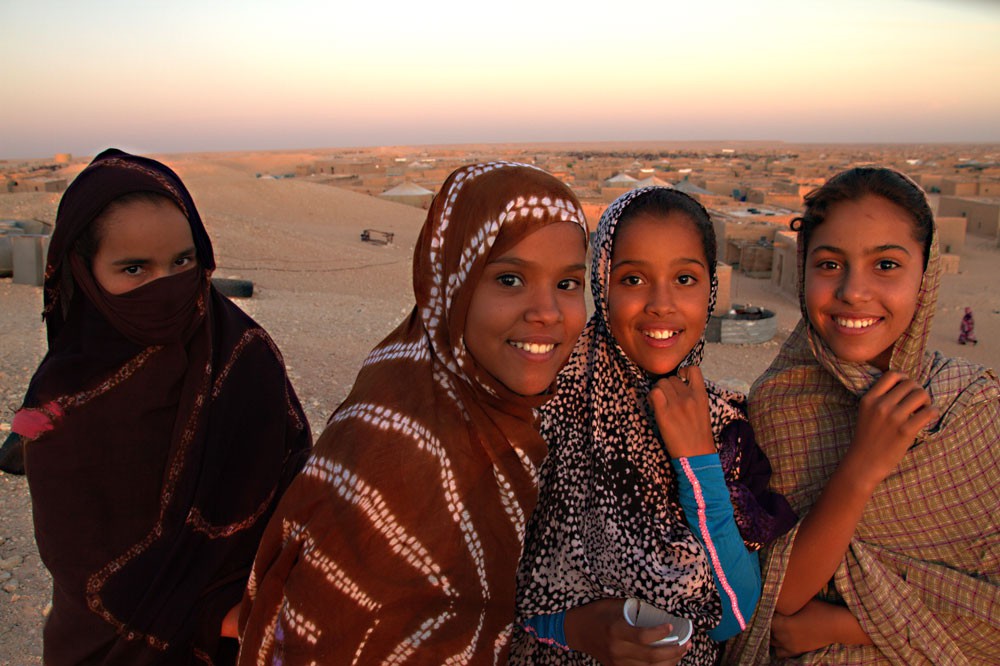
Since Spain’s withdrawal, the United Nations has sought to enable the people of Western Sahara to exercise their right to self-determination and independence. In 1991, the UN brokered a ceasefire between Morocco and the Polisario Front under the promise of a referendum in which the people living in Western Sahara could choose either integration with or independence from Morocco. But that referendum never occurred.
Following the stalled referendum, the UN started a program whereby separated family members, like Suilaman’s cousin and father, could meet. But Suilaman says this is not nearly enough.
“You are given up to seven days to see your family. A family you have not seen in 30 years! You live with that constant state of wanting to meet your family, but fearing to meet them at the same time, because you will be separated from them again. It’s torture!”
PotashCorp: Saharawi friend or foe?
Today the Saharawi population living in Moroccan-occupied Western Sahara has grown to around 120,000. PotashCorp, the largest purchaser of Western Saharan phosphate rock in the last four years, claims in an August 2014 report that the people living in the region are receiving “substantial and sustainable economic and social benefits.”
To verify this claim we talked to Abdeslam Omar Lahsen, current president of the Association of Families of the Imprisoned and Disappeared [Sahrawi] People (AFAPREDESA). Originally educated as a physicist at the University of Marrakesh, Lahsen’s involvement with a Swiss reporter made him suspicious to the Moroccan authorities. Lahsen says his eventual detainment and torture would forever change his life.
“During my stay in prison I was sleep deprived, I was blindfolded, and I was naked. If you did not give information then they would go to the next step in the torture: being hung from your hands and your feet – the same way that you would hang a chicken or meat.”
After 15 days, Lahsen was released.
He says that thousands of Saharawi have either disappeared or have been imprisoned or tortured, with no opportunity for fair trial or any Moroccan record of their captivity. Such injustices were described in a September 2012 Robert F. Kennedy Center report by an independent international delegation on the human rights situation in occupied Western Sahara. Observers noted police and military vehicles parked on every street corner of the capital city of Laayoune; police brutality against non-violent Saharawi demonstrators, including testimony of repeated beatings of a mentally handicapped protester; impunity for human rights violations; violations of rights to freedom of expression; and patterns of attacks and intimidation against human rights defenders, including fear of retaliation against those who collaborated with the RFK Center in producing their report. The delegation itself even reported intimidation and harassment from Moroccan authorities, who attempted to obstruct them from witnessing the beating of a peaceful protester.
“The Moroccan kingdom is an extremely authoritarian type of government that [has] very little regard for human life or loss of human life,” says Lahsen, adding, “as long as they get profits from the phosphate trade or from other natural resources that are rightfully ours – they’re not interested in preserving Moroccan or Saharawi lives.”

For Lahsen, the link between PotashCorp and the Moroccan oppression of the Saharawi people is very strong.
“I want to add simply that this company, PCS, is purchasing phosphate that is stained by the blood of the Saharawi people. It’s a shame on Canada’s international reputation.”
PCS views it differently.
A PCS document titled “Phosphate Rock from Western Sahara” states that the “operations and investments” of their supplier in Western Sahara “have significantly contributed to the development of Western Sahara and continue to provide substantial and sustainable economic and social benefits to the Saharawi population.”
PCS boasts that Office Chérifien des Phosphates (OCP) – the Moroccan state mining firm that PCS buys from – is employing Saharawi people. Referring to a company visit to the Western Saharan phosphate mines in 2013, PCS states:
“We had the opportunity to speak with a number of Saharawi employees and gained an appreciation for the quality of life they enjoy. Importantly, the company’s commitment to local employment was evident. Dramatic increases in the number and skill level of Saharawi employees over the past couple decades have been driven by Office Chérifien des Phosphates’ investment and commitment to training and education.”
Salem Labsir is a former phosphate mineworker and current minister of political education for the SADR. “There are very few Saharawi working in the phosphate mines,” says Labsir. “[The Moroccans] don’t trust the Saharawi to be working in such factories.”
Employed as an assistant technician to a laboratory engineer from 1972 to 1975, Labsir worked under the Spanish regime prior to Morocco’s occupation.
“The Spanish discovered the phosphate in Western Sahara in the late 1950s,” says Labsir (other sources, including NASA, cite the year 1947 for first discovery). “At that time it was on the surface of the land – you could dig for one metre and find phosphate.”
It was discovered about 110 kilometres from the Atlantic Ocean, explains Labsir. The Spanish delivered the phosphate to a seaport via what remains the longest conveyor belt system in the world.
“There are about 10 stages in the belt, each 10-kilometre stage feeding into the next.”
Labsir says that Saharawi coordinated multiple attacks on the conveyor belt, during both Spanish and Moroccan rule, to send a clear message: “The people refuse and reject this stealing of our natural resources.”
WESTERN SAHARA PHOSPHATE• PotashCorp purchases phosphate from a Moroccan state-owned company called Office Chérifien des Phosphates (OCP).
• In 2013, OCP made U.S. $7.1 billion in profits.
• That same year, PotashCorp was the number one buyer of phosphate from occupied Western Sahara, spending U.S. $107 million.
• The office of UN High Commissioner for Refugees estimates the comprehensive annual needs of refugees and asylum-seekers in Algeria at U.S. $33.2 million.
• The top layer of phosphate rock at Bou Craa (located in occupied Western Sahara) has been mined to exhaustion; a second deeper and less valuable layer is now being worked.
• OCP stated in 2014 that Morocco, including Bou Craa, holds 75 per cent of the world’s phosphate reserves – 50 million tonnes. China is second, with 3.7 million tonnes. The Global Phosphorus Research Initiative estimates that a global peak in phosphate rock reserves is as close as 30 years away.
• Politico reported that the Clinton Foundation once received a U.S. $1 million donation from OCP to support a high-profile conference with the king of Morocco.
According to Labsir, the multinational companies are just as culpable as Morocco for the phosphate plunder.
“When it comes to giving justice to two thieves, the one who kicked open the door and the one who helped him are equally wrong. The purchase of phosphate from the Moroccans is another way to enforce the Moroccan occupation of Western Sahara,” says Labsir. “It’s a shame on these companies not to stop these purchases when they are helping other governments oppress the people.”

Free the Children
So what is the role of Free the Children in all this? How could a star Canadian charity receive money from a company that was lining Moroccan coffers? At first I presumed it was ignorance – Free the Children just didn’t know about the connection between PCS and the dispossession of the Saharawi. But a November 2013 WSRW letter sent to Free the Children founders Craig and Marc Kielburger suggests otherwise. The letter reads in part:
“We do not see how the association with a company that aids and abets in the occupation of Western Sahara, resulting in tremendous human suffering, relates to the views and values of Free the Children. Your organisation is carrying out valuable work in creating a better future for children in difficult circumstances. We are convinced that you’ll understand the plight of the Saharawi people […] We trust you understand the importance of this matter, and that you will reassess your association with Potash Corporation.”
WSRW was overly optimistic. To date, Free the Children has not replied to the WSRW letter. Earlier this year, I called and emailed Free the Children’s director of public relations multiple times to ask if they have, in any way, reassessed their association with PotashCorp. I have yet to receive a reply.
FREE THE CHILDRENFree the Children was co-founded in Ontario in 1995 by 12-year-old Craig Kielburger. Kielburger’s story is billed as “one child’s transformation from a normal, middle-class kid from the suburbs into an activist fighting against child labour on the world stage of international human rights.” Just under half (49%) of Free the Children’s 2014 budget went into “domestic projects” that included the We Day mass rallies. We Days have been held in 14 stadium-sized venues – 13 in North America and one at Wembley Arena in the U.K. – with global youth attendance at 278,000 to date.
While in the camps, we interviewed Mohamed Zean, secretary general of the Saharawi Youth Organization.
Zean says his organization receives assistance from many different international NGOs and would love help from a Canadian charity, but not one that receives money from a corporation that is purchasing phosphate in occupied Western Sahara.
“They [Free the Children] better liberate themselves before they help to liberate us,” says Zean. “How is it possible that [a Canadian company] takes our phosphate and then they [foreign charities] bring us humanitarian projects?”
Zean offers Free the Children a personal invitation. “They should come down here and see the suffering of the people in the refugee camps or occupied zones.”
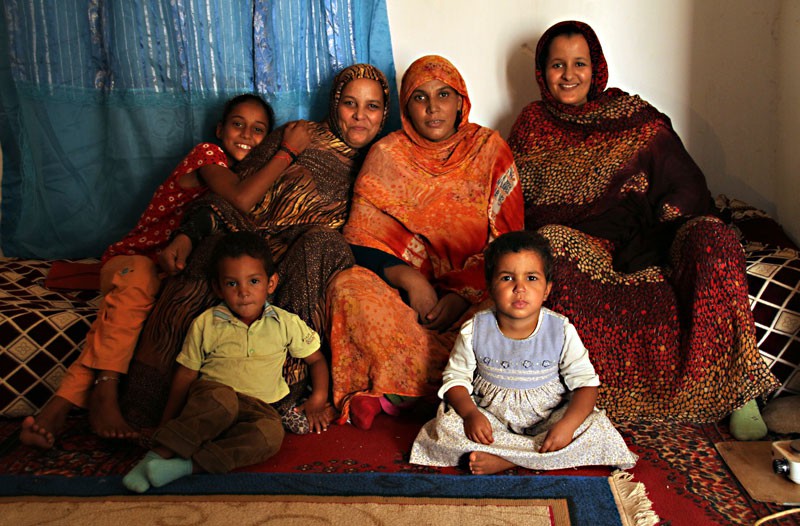
Longing for homeland
After all of our interviews we wonder what hope Saharawi young people have, if any, for a future solution. In one of our final discussions we talk to 26-year-old Galihena Mohamed, who oversees external affairs for the Saharawi Students’ Union.
Mohamed agrees to meet us at the home where we are being hosted. He enters wearing a blue robe with a golden sash. He is friendly but speaks with conviction. “I think that young people like me are frustrated by [seeing] no solution for our conflict,” he says. “The young people are starting to not believe in peaceful ways and I’m afraid that could go to an extremist choice – maybe armed struggle, which we don’t like,” he says.
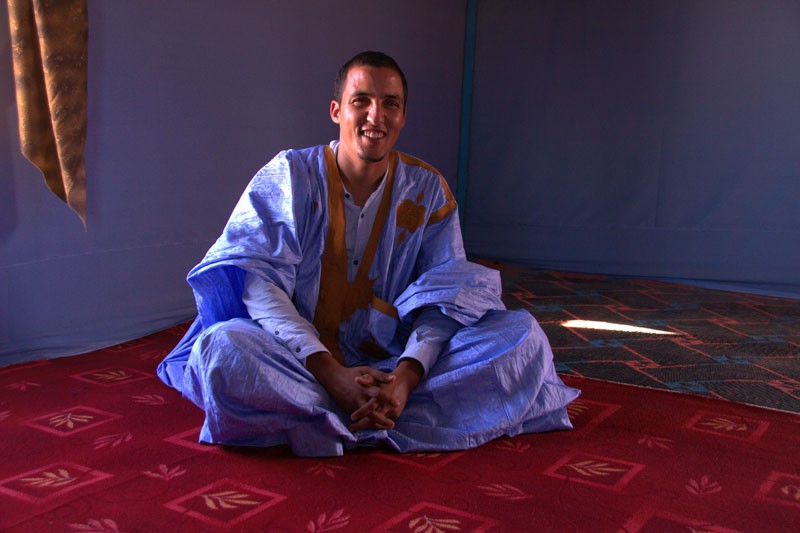
Mohamed doubts that the United Nations will help, saying they have done nothing since the 1991 ceasefire. He says that he will go to war if he has to, but his ultimate hope rests in the international community. “I have faith in people who may hear our message and take it to others to make more pressure on the United Nations to give us our legitimate right.”
He has one dream. “My hope is to make a family there in my own land – to see my children grow up, in a free Western Sahara.”
TAKE ACTION• Visit the website growingdeception.com for more information and to donate to a documentary film project on the role of PotashCorp in Western Sahara
• Email or phone PotashCorp to express concern by visiting potashcorp.com/contact
• Write to your member of parliament
• Submit a message at the site growingdeception.com if you are interested in helping to organize protests



